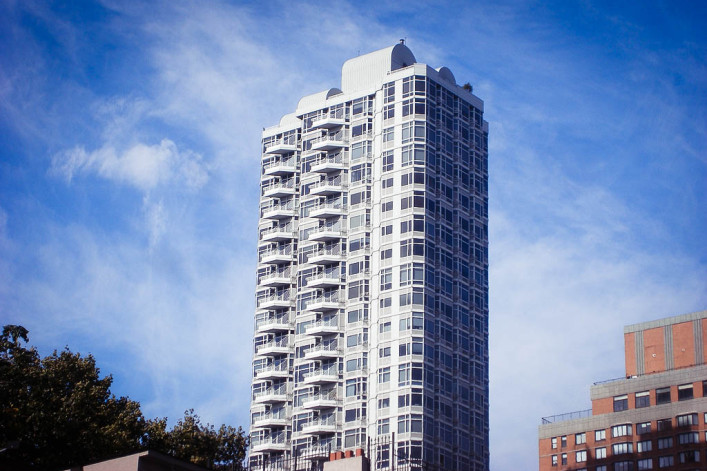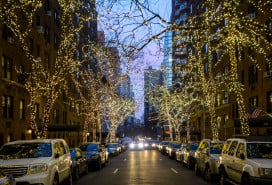What you need to know about "poor doors," now that one is coming to the Upper West Side

In spite of an onslaught of negative attention last summer, plans for a luxury condo building at 40 Riverside Boulevard—and its so-called "poor door," a separate entrance for tenants in affordable units—have been approved by the city, the New York Post reports.
Per the plans, the building will reportedly have 219 market-rate condos with waterfront views and 55 affordable units in a part of the building that faces the street. Supposedly this type of arrangement is win-win, as it provides much-needed affordable housing units and allows developers, in this case Extell Development, to put up larger buildings (and qualify for tax breaks). For obvious reasons, though, the idea of an income-segregated building doesn't sit well with too many New Yorkers. As 40 Riverside takes shape, some things to keep in mind about the great divide between market-rate and affordable residents in upscale new developments:
- Extell didn't invent the "poor door." As The Real Deal reported when this was first in the news, it's not particularly common, but other high-profile developments have employed similar tactics. One notable example is Williamsburg's 1 Northside Piers, where the building's 134 affordable units have a separate entrance from the rest of the building.
- In buildings where residents share the entryway, the difference between affordable and market-rate tenants is not transparent. "With my extra savings from cheap rent, I am able to travel the world and buy nice things," one affordable tenant wrote in a 2012 article on Brick. She lived in a so-called 80/20 building in Battery Park City, where 20 percent of the units are set aside for tenants who meet certain income restrictions (in her case, less than half the area's median income of $108,000). "You probably wouldn’t pick me as a 20," she wrote. "I have, in fact, a little game I play called 80/20 profiling, trying to pick out the other 20s in the building. I assume the ones doing their own laundry (like me) are 20s and the ones getting laundry delivery from the local (expensive) dry cleaners are 80s."
- The real battle might be over amenities. Rent-stabilized tenants have increasingly aired their frustrations at being excluded from building amenities, and while developers aren't required to grant rent-stabilized tenants access to fancy new perks, we've previously noted that this kind of division could potentially dissolve via new legislation, intervention of market-rate residents, or good, old-fashioned peer pressure from so much bad press.
- Poor doors might become even less common. According to the Post's write-up, Manhattan Borough President Gale Brewer "vowed to reject future developments with separate entrances," and back when 40 Riverside was first in the news, then-City Council Speaker Christine Quinn said, “We need to change state law so that developers [eligible for the exemption] provide common entrances and facilities for residents of the building.”
Related:
Ask an expert: are condo renters entitled to use the new gym?
80/20 apartment living: my life as a 20 percenter
4 ways the Upper West Side gym debacle could play out
Why banning renters from the roof deck is a dumb idea
At The Edge, kids love the perks but virtual golf is a puzzler



























